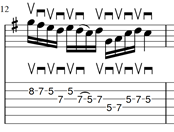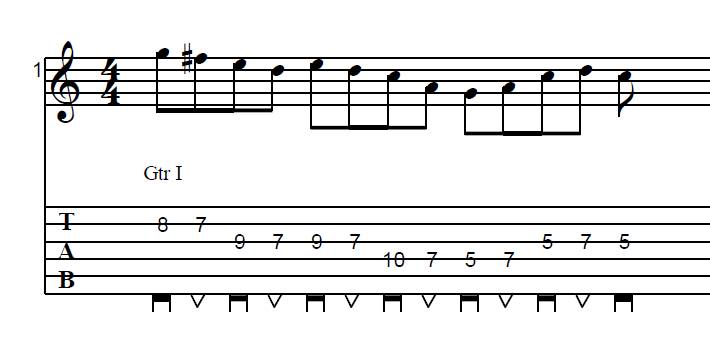So I got roped into playing a local charity event - I’m covering the “stunt guitar” portion of a set of Toto tunes.
We’re doing “Falling In Between” which features this lightning fast lick at :45
E ------------------------------------------------------------------------|
B -----------8-7-5----5---------------------------------------------------|
G ------------------7-----7-5-7------5-7-5-----------------------------------|
D ---------------------------------5-7-----------------------------------------|
A ------------------------------------------------------------------------|
D ------------------------------------------------------------------------|
Lukather, IIRC, is an upward pick slanter. I am primarily a downward pick slanter, but I have been working this one over starting with UWPS for the first four or seven notes.
Experienced lick technicians, what could we do with this lick to make it easier on a downward pick slanter? Last night I was fooling with adding an extra F# on the front with a down… Any ideas?
I intend to try and work it out UWPS 100% or close, but getting there in time for the performance, I dunno…
Thanks much for helping me work out this puzzle.



 I may be wrong but I have the impression that your trajectory gets less curved as you speed up in the “outside picking” examples like the one around 0:58. Have you ever tried filming a few reps of this chunk and seeing what happens when you alternate between two strings as fast as you can? Do you still see a curved path?
I may be wrong but I have the impression that your trajectory gets less curved as you speed up in the “outside picking” examples like the one around 0:58. Have you ever tried filming a few reps of this chunk and seeing what happens when you alternate between two strings as fast as you can? Do you still see a curved path?